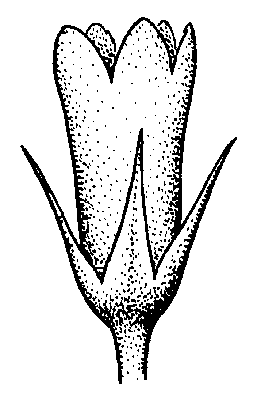SEARCH the
Gentian Research Network
and Rutgers University:
GENTIANS
Classification (newest)
List of genera
List by tribe
Gentian characteristics
Gentianales
RESEARCH
Research projects
People, addresses
Literature, publications
Links
Add info to
this site
TOPICS
Anatomy
Common names
Ecology - Natural history
GEOGRAPHY
Floras
Latin America
North America
TRIBES
Saccifolieae
_____________________
Information in other languages:
_____________________
This page
is maintained
by Dr.
Lena
Struwe
(e-mail),
and hosted by
Rutgers University, USA
updated: 01/19/11
|
Curtia (Gentianaceae: Saccifolieae) |
 |
||||||||||
|
Common name: Latin name and synonyms:
Curtia Cham. & Schltdl., Linnaea 1: 209, t. 4 (1826). Species: 6-10 species. Distribution: This genus only occurs in the Neotropics, with most species present in Brazil. The total distribution includes Mexico, Guatemala, Belize, Honduras, Costa Rica, Panama, Colombia, Venezuela, Guyana, Suriname, French Guiana, Brazil, Bolivia, Paraguay, Uruguay, and Argentina. Habitat: Savannas, grasslands and open spaces in the Neotropics. Characteristics: Erect annual herbs, usually not very conspicuous.. Stems terete to quadrangular. Leaves scale-like, linear to elliptic or ovate, opposite or sometimes in whorls (up to 8 in each whorl). Inflorescence a lax cyme. Flowers 5-merous, pedicellate, and sometimes heterostylous. Calyx with tube shorter than calyx lobes, with calycine colleters. Corolla white, yellow, pale lilac, pink, or purplish, sometimes hairy on the inside, funnel- to salver-shaped; corolla tubes about as long as corolla lobes. Flowers with short styles with long filaments and free, non-sagittate anthers without sterile tissue at apex. Flowers with long styles with short filaments and connate, sagittate anthers with a sterile appendage at apex. Anthers basifixed (rarely dorsifixed). Stamens of long-styled flowers usually inserted lower in the corolla tube than in short-styled flowers. Pollen released as monads (single pollen grains). Ovary unilocular with parietal placentas, tapering into a distinct style. Stigma bilobed or club-shaped. Fruit a small capsule. Evolution and related plants: Curtia is placed in the Saccifolieae, together with other heterostylous plants such as Tapeinostemon and Hockinia. Economic uses: None known. Notes: Accepted/Selected species (synonyms in parenthesis) and their distribution:
Gilg, C. 1939. Beiträge zur Kenntis der Gentianaceen-Gattung Curtia Cham. & Schlecht. Notizbl. Bot. Gart. Berlin-Dahlem 121: 66-93. Grothe, E. H. M. & P. J. M. Maas. 1984. A scanning electron microscopic study of the seed coat structure of Curtia Chamisso & Schlechtendahl and Hockinia Gardner (Gentianaceae). Proc. Kon. Ned. Akad. Wetensch., Ser. C, 87 (1): 33-42. Maguire, B. 1981. Gentianaceae. Pp. 330-388. In: B. Maguire & collaborators, editors. The Botany of the Guayana Highland – Part XI. Mem. New York Bot. Gard. 32. Struwe, L., J. W. Kadereit, J. Klackenberg, S. Nilsson, M. Thiv, K. B. von Hagen, & V. A. Albert. 2002. Systematics, character evolution, and biogeography of Gentianaceae, including a new tribal and subtribal classification. Pp. 21-309. In: L. Struwe & V. A. Albert (eds.), Gentianaceae: Systematics and Natural History, Cambridge University Press, Cambridge. Struwe, L., P. J. M. Maas, O. Pihlar, & V. A. Albert. 1999. Gentianaceae. Pp. 474-542. In: P. E. Berry, K. Yatskievych, & B. K. Holst, editors. Flora of the Venezuelan Guayana, vol. 5. Missouri Botanical Garden, St. Louis. (images)
© Lena Struwe, 2004 |
|||||||||||
